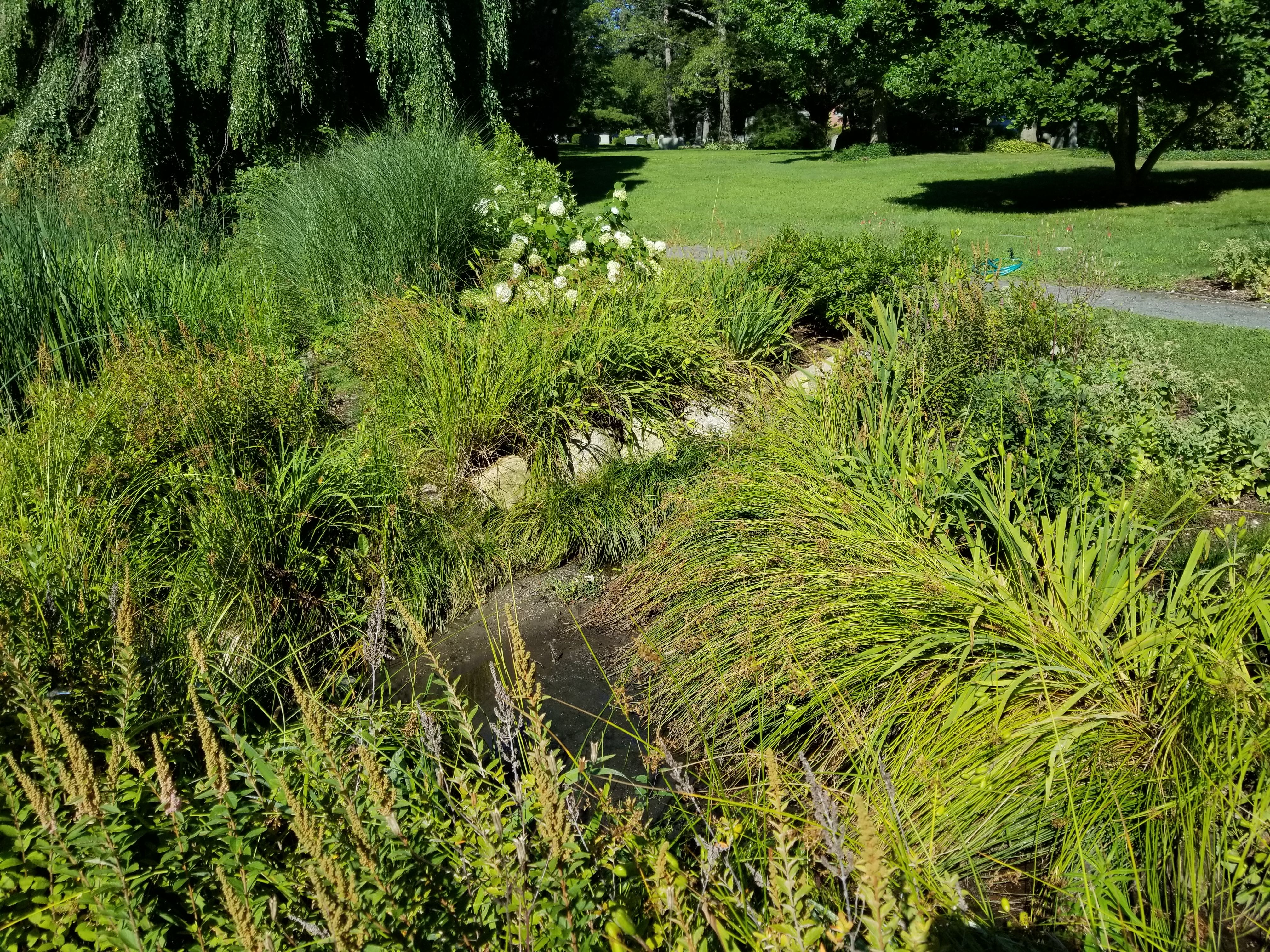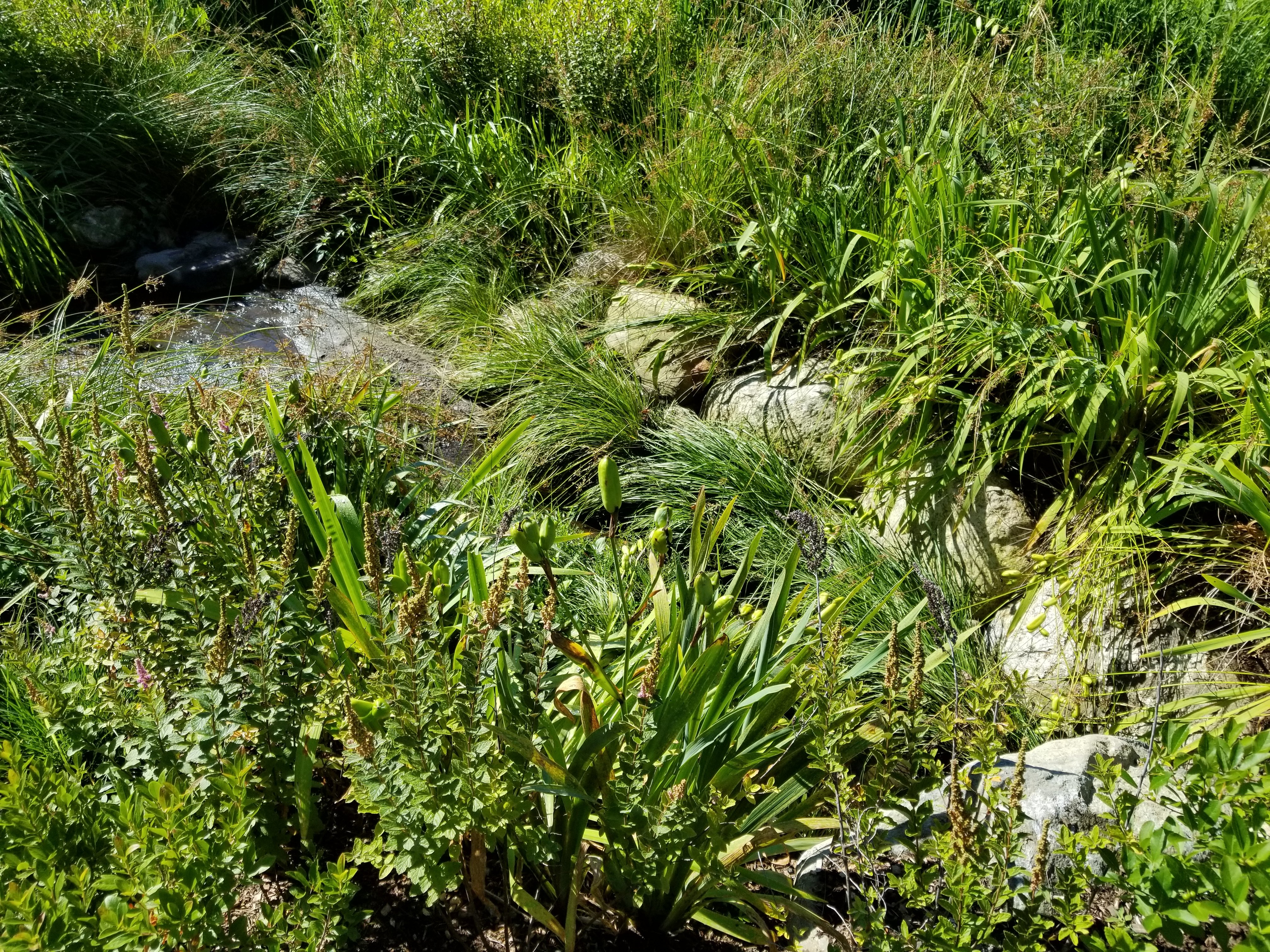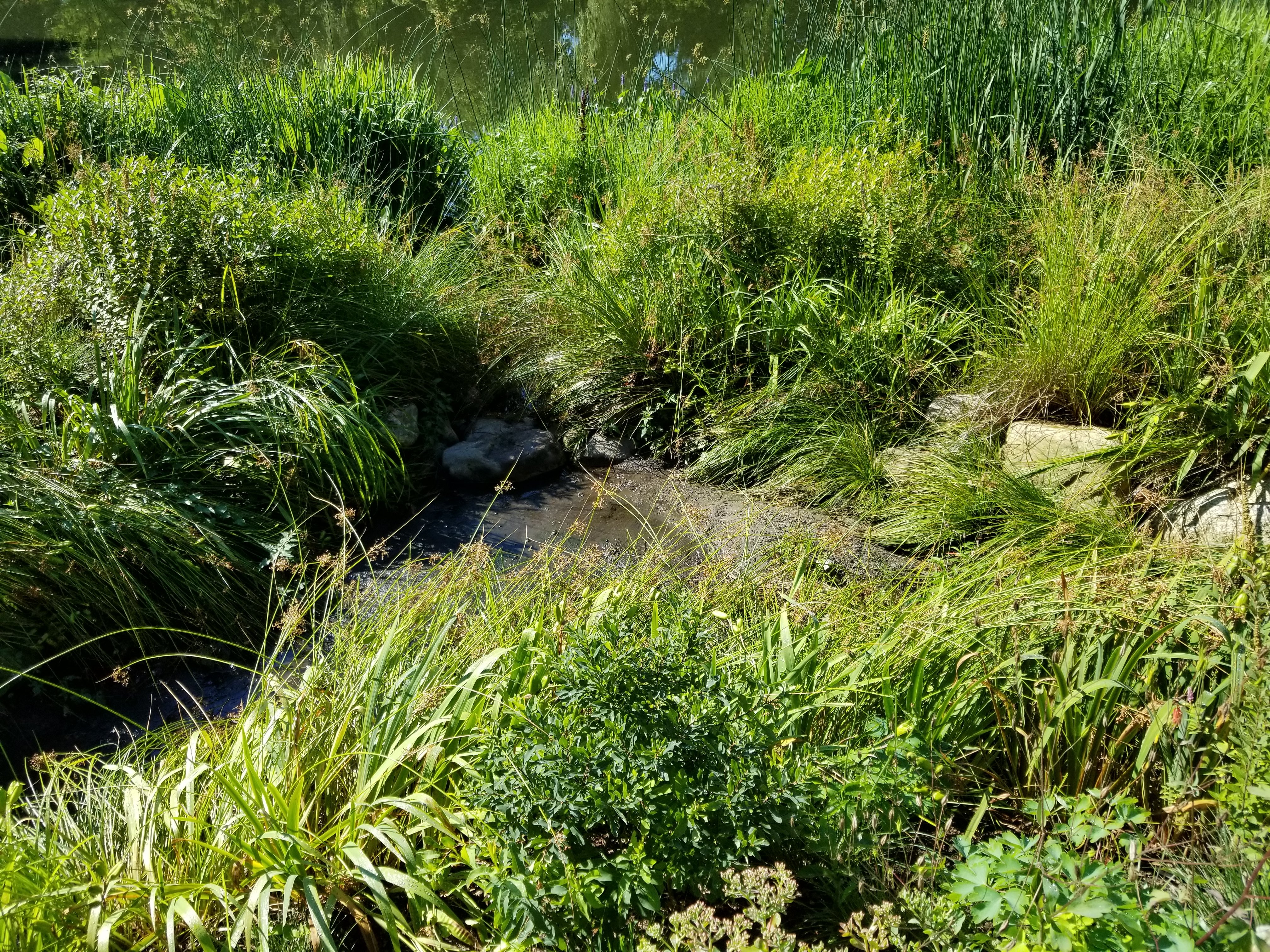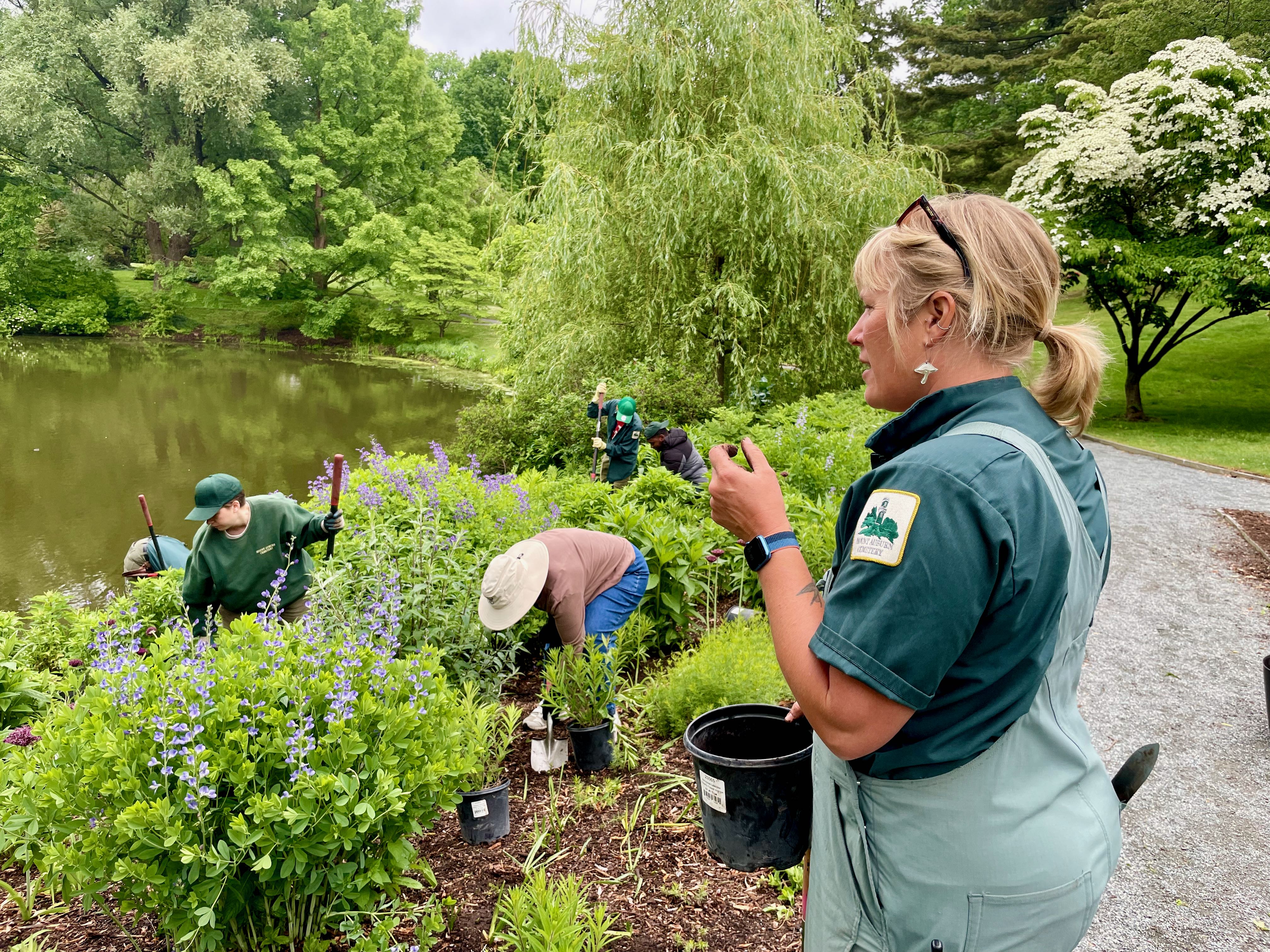
Willow Pond Restoration: Rain & Butterfly Gardens
In 1992, a major landscaping and replanting initiative developed by Halvorson Design for the Willow Pond area was implemented to enhance the beauty of the Pond while improving habitat for birds and other wildlife. A new irrigation system and improved path were installed and many trees, shrubs, and ground-covers were planted in the fall. Additional plantings were installed in the spring of 1993.
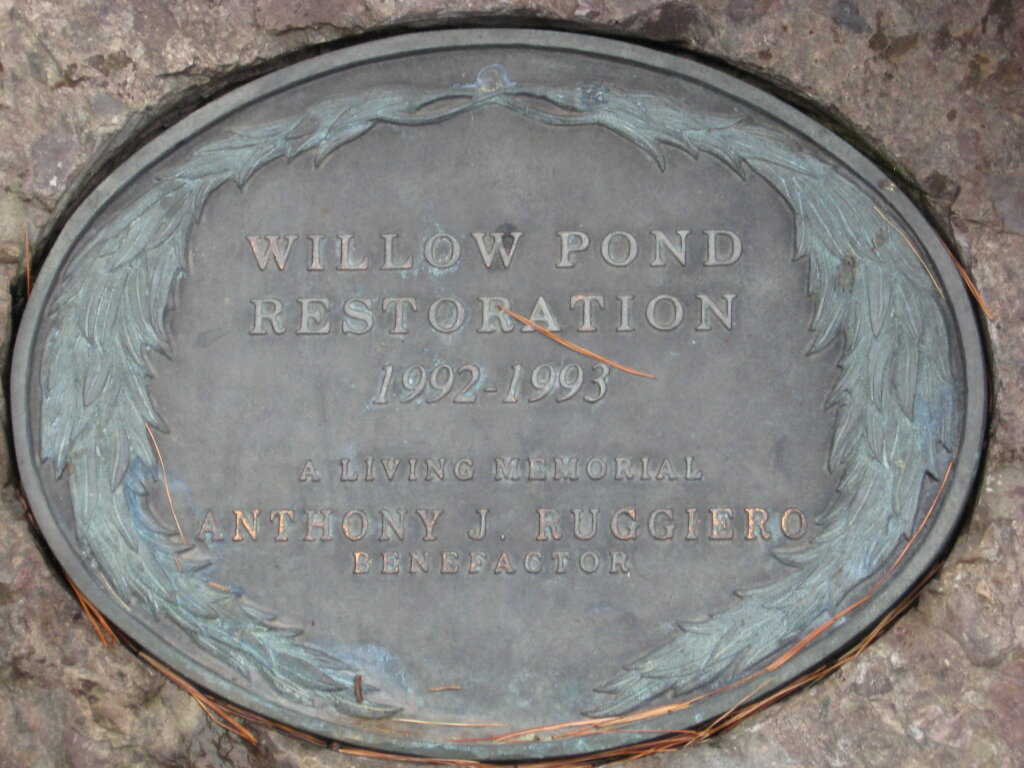
The 1990's restoration of the Willow Pond landscape would set the stage for multiple projects to revitalize the landscape and create sustainable areas for plants and wildlife to thrive.
Rain Garden Development
Willow Pond has long been at the forefront of Mount Auburn’s aquatic habitat improvement initiatives. In 2003 the pond was dredged to remove nutrient-laden organic matter in an attempt to discourage algae and bacterial growth while also increasing water depth. Coinciding with the pond’s dredging, the Cemetery installed an emergent plant shelf at the northern end of the pond. The root systems of the semi-aquatic plants planted in this shelf act as a natural filter for the storm water that enters the pond through drainage pipes. These projects have yielded an improved habitat for amphibians, reptiles, fish, birds, and insects. It is now quite common to hear the call of bullfrogs, observe turtles basking on the berm of the emergent shelf, witness a great blue heron hunt for fish in the shallows, or become hypnotized by the dance of dragonflies above the water.
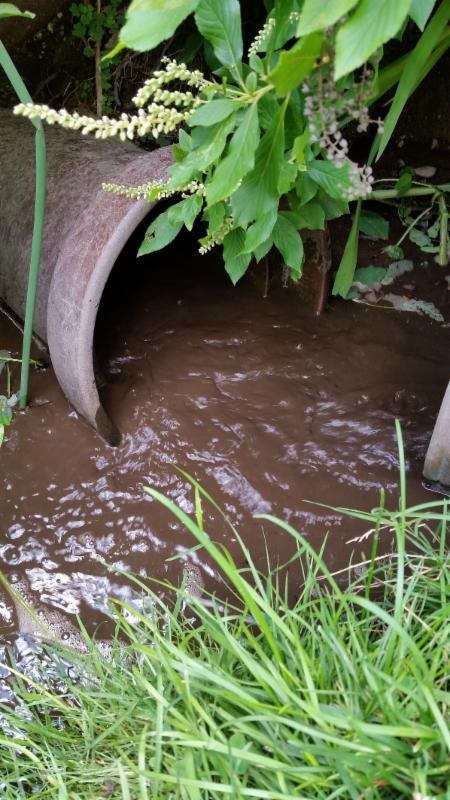
Climate disruption, however, has impacted the previous restorations at Willow Pond. With an increasing number of powerful rain events, a higher volume and stronger velocity of storm water is entering our underground drainage system more frequently, inhibiting the effectiveness of the bio-filtration process at the previously installed aquatic emergent shelf. As part of our Wildlife Action Plan, environmental consultants from New England Environmental, Inc. designed an improved storm water management system that would improve the water quality at Willow Pond while adding additional habitat value for a variety of wildlife.
Built in 2016, the Willow Pond Rain Garden is a rocky depression built into the banks of Willow Pond along its northern edge. In rain events, water flows from storm water drains into this rocky pool where native stones help to reduce the water’s damaging velocity and trap its nutrient-laden sediment. A stone weir separating the rain garden from the actual pond holds and slowly discharges the storm water from the rain garden into the existing emergent shelf, where the final filtering process occurs before the water enters the main body of the pond.
The Willow Pond Rain Garden was planted with species that can tolerate periods of submergence in water as well as provide food and cover for resident wildlife. The plan below illustrates the planting zones surrounding the rocky channel at the center of the garden. Some highlights from this garden include, Winterberry Holly (Ilex verticillata), Dwarf Fetterbush (Leucothoe fontanesiana), Pickerelweed (Pontederia cordata), Soft Rush (Juncus effusus), and many more.

Butterfly Garden Planting
When people talk about the wildlife that benefit from Mount Auburn’s sustainable initiatives, it is easy to focus on Mount Auburn’s special place in the world of ornithology. However, Mount Auburn is equally conscious of the roles that it plays in the sustainability of vital habitats for numerous other groups of wildlife that visit our grounds throughout the year. This is especially true for some of our smallest and most vulnerable visitors – butterflies!
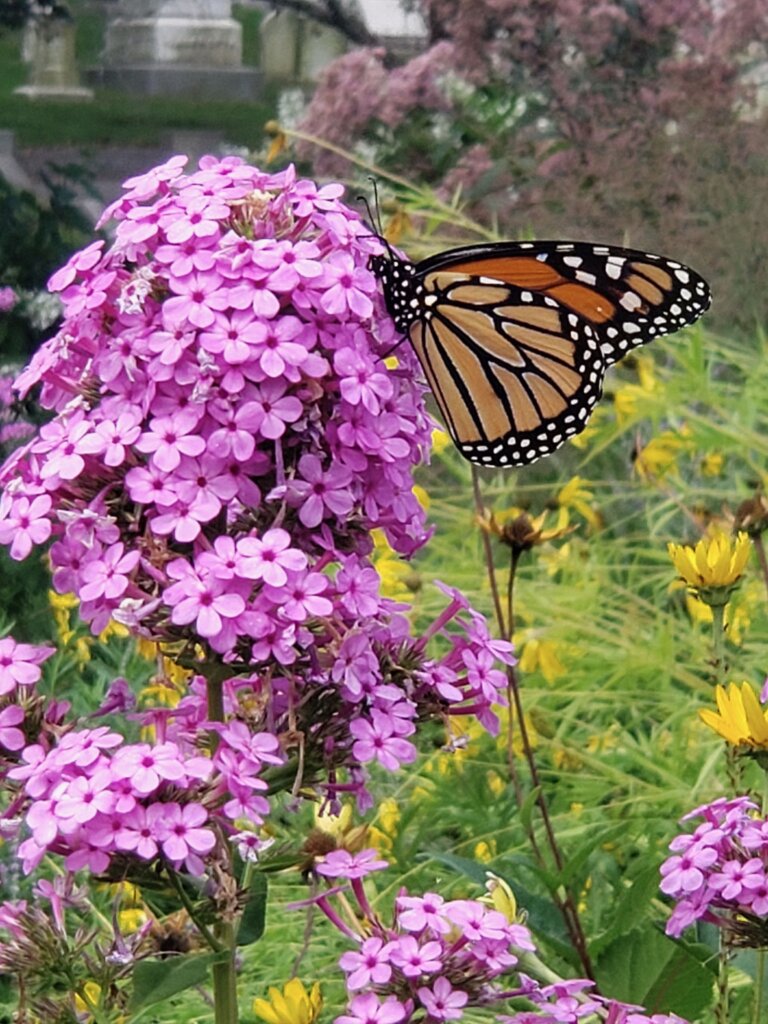
In 2005, Mount Auburn established the Willow Pond Butterfly Garden which is comprised of a grouping of plants found on the southeast bank of Willow Pond. This project was a deliberate effort to increase the number of nectar-producing flowers on our grounds to which native and migrating butterflies flock. Together, the specially selected plants provide a safe and consistent source of nectar for butterflies. Collections of these nectar-producing plants are appearing less frequently in nature due to invasive plant species, pollution, and other land uses.
After nearly two decades, The Butterfly Garden was replanted in the Spring of 2023 by Mount Auburn Staff and Citizen Science Volunteers which you can see in the video at the bottom of this page.
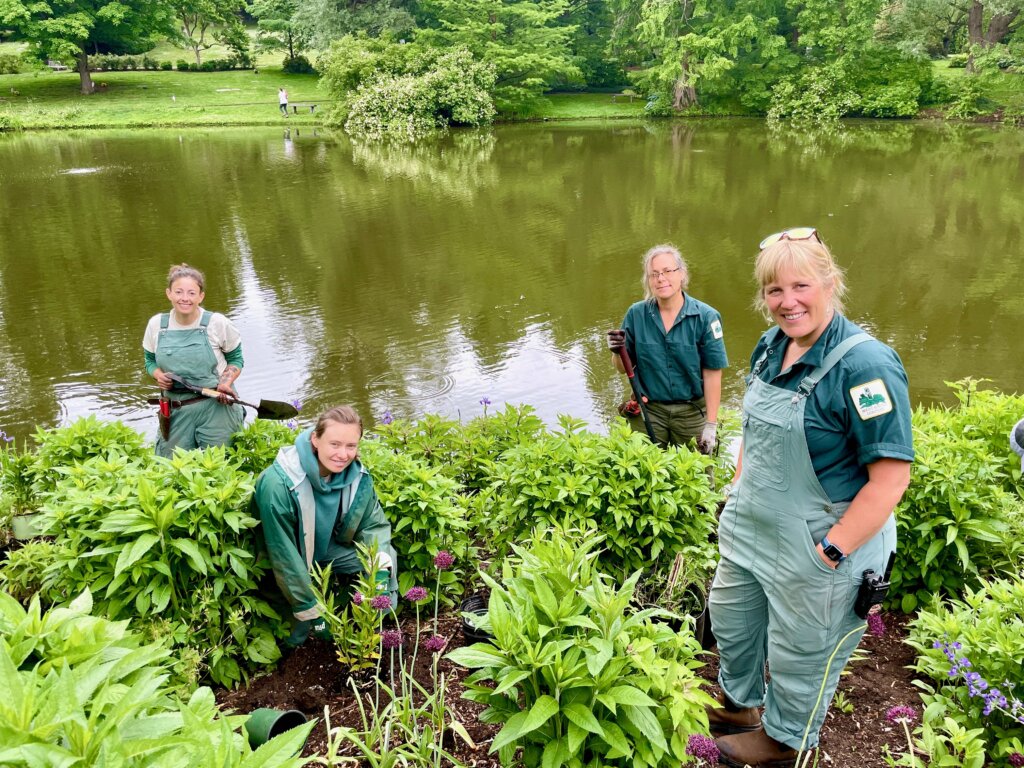
The butterfly garden, as part of the greater Mount Auburn landscape, provides a habitat that encourages the growth of and sustains the current populations of threatened and near threatened species of butterflies. The nectar of these special butterfly attracting flowers provides the vital sustenance that these butterflies need to continue their migrations through the breeding cycle.
The plants found on the southeast side of Willow Pond were chosen specifically because of their hardiness in New England and their particular appeal to butterflies found on the eastern coast of the United States. Some of the butterfly species that you can find in our garden include: Monarchs (Danaus plexippus), Eastern Tiger Swallowtail (Papilio glaucus), American Painted Ladies (Vanessa virginiensis), and various species of American Coppers (Lycaena phlaeas) and Skippers (Hesperia comma).
Re-Planting The Butterfly Garden 2023 (Video)
To create your own butterfly attracting garden, here are a few of the many nectar producing flowers that you can start with, that are also found at Willow Pond: New England Aster (Symphyotrichum novae-angliae), Tickseed (Coreopsis), Purple Coneflower (Echinacea purpurea), Stella d’Oro Daylily, (Hemerocallis), Marshall’s Delight (Monarda), Butterfly Blue (Scabiosa columbaria), Brilliant Spectabile (Hylotelephium spectabile), Viola (Viola). Additionally, planting milkweed (asclepsia), the only plant that Monarchs can lay their eggs on, in a butterfly garden is a great way to help ensure the Monarchs continued survival.
Acknowledgements
Thank you to the Ruggiero Memorial Trust, Halvorson Design, and New England Environmental Inc. as well as the support from individual contributions to the Friends of Mount Auburn.

